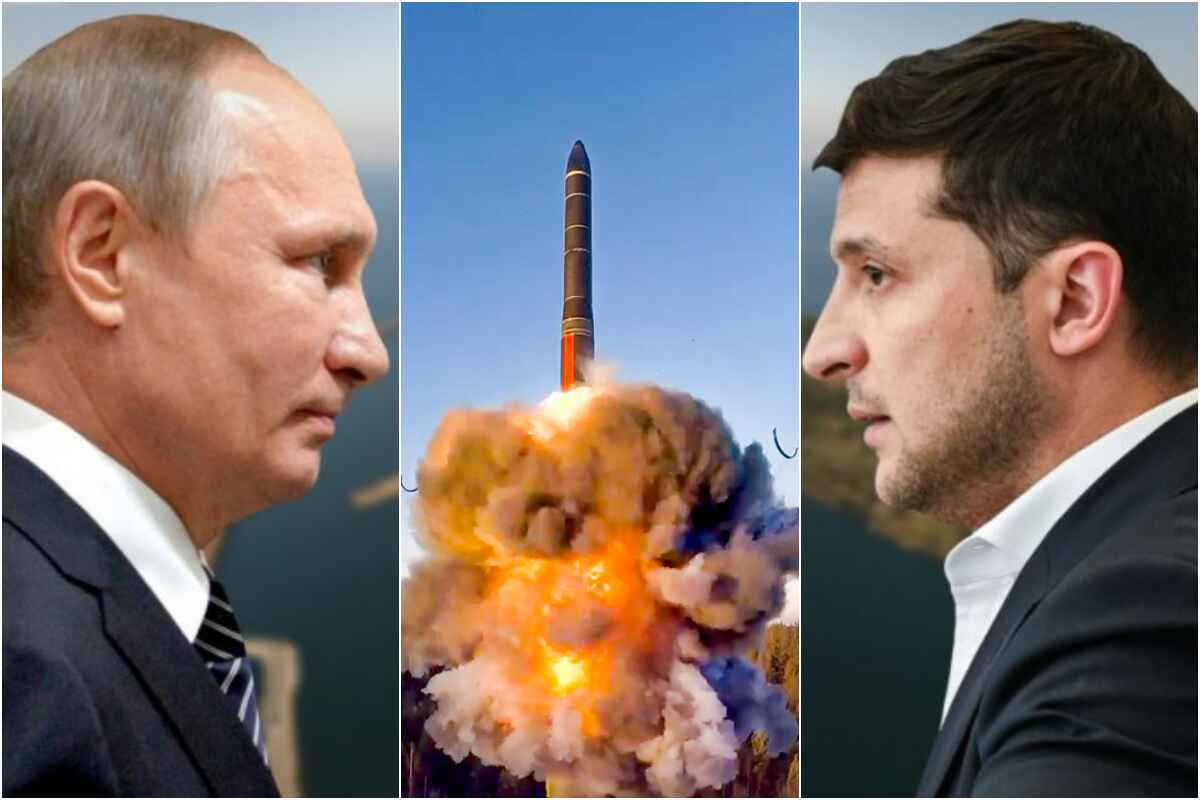
Clouds of a catastrophic nuclear war are once again looming large over the Ukrainian war theater. President Vladimir Putin has made the fateful decision to deploy tactical nuclear weapons to Belarus, a crucial Russian ally that shares borders with both warring countries. Putin had long been issuing threats of such drastic action. US President Joe Biden further stoked the flames by acknowledging the “real” possibility of Russia using nuclear weapons in the Ukraine conflict. This marks the first time since the dissolution of the USSR in 1991 that Russian nuclear weapons have been deployed beyond the country’s borders. Numerous media reports suggest that the Russian weapons now stationed in Belarus could be three times more devastating than the bombs used in Hiroshima and Nagasaki.
Hopefully, both the US and Russia will exercise restraint and refrain from escalating the situation further. The Biden administration has already clarified that it has no intentions of redeploying its nuclear assets in response. President Putin, meanwhile, has avoided saber-rattling while reminding the world that US nuclear weapons are already stationed across Europe.
But what prompted President Putin to raise the stakes? His army is increasingly under pressure as its campaign in Ukraine has stretched on for over a year. Many believe this has led the strategic planners in the Kremlin to reassess their priorities in this war. Western support for Ukraine’s counter-offensive, particularly through mounting drone attacks on Russian cities, is hardly a secret. Russia aims to somehow dissuade Ukraine’s Western allies from aiding its war efforts, vehemently opposing NATO sorties over Ukrainian skies. Putin hopes that the presence of nuclear weapons in Belarus would not only fulfill this objective but also deter the US and its allies from tightening economic sanctions.
However, Putin may be overly optimistic, as the strategy of nuclear blackmail has its limitations. Similar tactics failed to prevent NATO from expanding by incorporating Finland as a member. Western allies continue to support Ukraine, disregarding Putin’s veiled reminders of nuclear options on multiple occasions. In March, Dmitry Medvedev, the deputy secretary of Russia’s Security Council, left no room for doubt as he warned of the escalating threat of a nuclear war. Since then, Ukraine’s counter-offensive has only grown more intense.
There appears to be little chance that the US-led alliance will succumb to the nuclear threat and accept Russia’s territorial claims over Ukraine. The likelihood of the Russian Army breaking the existing stalemate on the warfront is diminishing. Even if Russia somehow manages to reverse its fortunes in the war, NATO will never allow Ukraine to lose this battle. Pushing their luck too far on the battlefield may even lead the US to lose patience and engage in the conflict more directly. The lack of progress in the war also tests Russia’s unease. On the other hand, the Biden administration will ensure it avoids repeating the mistakes made during the withdrawal from Afghanistan, especially in the lead-up to next year’s presidential elections.
Meanwhile, China is also closely watching the situation. Putin’s move to send nukes to Belarus has only frustrated Beijing’s attempts to emerge as the peace broker in this conflict. Both Putin and Chinese President Xi Jinping had recently pledged to not deploy nuclear weapons to other countries. In a thinly veiled reference to the US, they even advised other nations doing the same to reflect on their actions.
The US Secretary of State Anthony Blinken’s China tour this week has raised hopes in this context. It was the first visit by a US foreign minister to China in the past five years. Interestingly, China has shown equal willingness to move past contentious issues like spy balloons and its support for Russia in the Ukraine war, aiming to stabilize bilateral relations. Escalating tensions between the US and China are a concern for the global community. While a breakthrough on sensitive issues like Taiwan or the US embargo on Chinese imports was not expected during Blinken’s visit, it helped bring some stability to the relationship between the two leading global powers. Blinken reiterated the US’s commitment to the “One China” policy and expressed a desire for a status quo on challenging issues between the two countries.
The Biden administration has recently demonstrated a greater willingness to accept China’s growing role in world affairs. China’s offer to help end the Ukraine war has apparently played a significant role in softening the US’s stance. The Chinese government’s statement cautioning Russia against nuclear brinkmanship was welcomed by Washington. China’s involvement is crucial in this conflict because Putin is unlikely to come to the negotiating table as long as he believes in the possibility of a decisive victory, which relies heavily on continued Chinese support. Therefore, the alignment of China and the US on this issue could prove to be a game changer.
India and China are the only major global players with the capacity to influence the Kremlin’s decisions. The international community has little leverage left to dissuade Russia from raising the nuclear threat. Formal global treaties like the Treaty on the Prohibition of Nuclear Weapons (TPNW) prohibit nations from making nuclear threats, but unfortunately, none of the nuclear powers are signatories. Since the start of the Ukraine invasion, President Putin has disregarded many international agreements. While some analysts may view Putin’s decision to send nuclear weapons to Belarus as mere maneuvering, it cannot be denied that as long as nuclear weapons exist, the possibility of their use remains real. This is exactly what President Biden has also suggested.




















